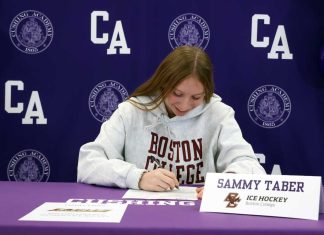Nan Austin writes in the Modesto Bee in California that elementary school students are having fun at math camps during the time they would normally spend on spring break.
Free camps are open to students at two low-income elementary schools, and a fee-based camp is open at a local university.
The teachers, most of them high school teachers or college students, have an uncanny ability to think on their feet and get creative, ditching well-laid lesson plans and making up new ones as they go.
Sure, they have a stack of lesson plans at the ready when students begin arriving at 8:30 AM on the first day. But that doesn’t mean they’ll be teaching those pre-planned lessons.
Students take a brief test on the first day, and from that test, teachers decide what skills they need help with. That could mean the total abandonment of everything they prepared in advance. It could mean making up lessons on the fly, using supplies that are available in the room.
One spur-of-the-moment lesson was about fractions and involved a deck of standard playing cards. Math teacher Fabian Jauregui from Gregori High School dealt cards out to fifth-grade students in his group.
“Make the largest fraction you can,” he told them.
Then, when the hand was called, each player proposed the biggest fraction he thought possible, given the cards in his hand, placing one number in the numerator and one in the denominator with an imaginary fraction bar in between.

The player with the biggest fraction wins the hand.
So who won? The boy with 9 over 4? The girl with 9 over 2? Or, is it better to make the top number smaller? If you want to check your answer, here’s a demo we developed that teachers or students can use to compare fractions using fraction wheels.
These are problems Mr Jauregui said trouble even his high school algebra students: fundamental number skills. “That’s what I see a lot in my freshman classes. Kids 14 and 15 years old lack basics like fractions,” the Bee quoted him as saying.
So, in addition to the fifth graders in front of him getting something out of the camp, he’s picking up a few games he can bring back to his high school classes.
Also learned at this camp was the way to find the volume of rectangular prisms. Stanislaus State math major Jaime Trujillo found a Kleenex box in the room, which she conveniently drafted into service for that lesson.
Second graders got lessons in place value. Even parents got some advice about how best to help their kids learn the skills required for upcoming Common Core tests.
But is it really fun?
“The first day, you could see the desperation in their faces. It felt like they were being forced to do this,” high school math teacher Veronica Chaidez was quoted as saying. “But after they’d done it, you can see today, they’re all smiles and rushing right by me to get to class.”
She said parents tell her their kids can’t get out of the house fast enough in the mornings. “That’s telling us we’re doing it right,” she said.















